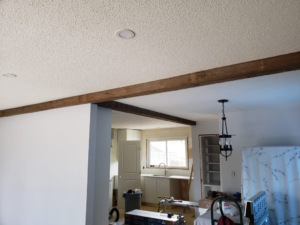There are a few things to keep in mind when troubleshooting an ultrasonic welding process. These include decreased weld strength, excessive flash and welder overload.
The main components of an ultrasonic welding system are the power supply, converter and booster. The converter transforms high-frequency electrical energy into mechanical vibrations, which are then amplified by the booster before being transmitted to the horn (or sonotrode). This produces ultrasound, or acoustic wave. Contact Florida Ultrasonic Welding now!

Unlike other welding methods, ultrasonic welding does not use flammable fuels and open flames. It also produces no toxic fumes, making it a safer process for workers. In addition, it can be used to seal materials without the need for adhesives. This makes it ideal for medical applications, where a sterile environment is required. For example, tamper-evident seals can be created for PCBs in a fraction of the time needed with glue. This can help prevent counterfeiting and other types of product theft.
The key to effective ultrasonic welding is the right tooling. Whether you’re using horns, sonotrodes, or custom tooling solutions, the proper tools can make or break the success of your welding project. Moreover, proper maintenance and training of operators can help reduce the risk of accidents and other issues that could affect productivity.
Ultrasonic welding machines use sound waves to create friction between surfaces, shearing and flattening local surface asperities and dispersing interface oxides to bring metal-to-metal contact and bonding. The vibrations do not cause melting or fusion of the base metal, which allows the welding to take place with little energy and no residual heat. Using the right tooling can increase the effectiveness of the welding process and ensure a high-quality weld.
Another advantage of ultrasonic welding is that it can be performed at lower temperatures than other methods, such as laser welding or hot-plate welding. This can save money on production costs and reduce the risk of environmental damage. Moreover, this technique is capable of welding various types of materials, including plastics, metals, ceramics, and composites.
Several factors can affect the results of an ultrasonic welding project, such as the geometry and thickness of the parts to be joined together. For example, thin parts have a higher chance of being successfully welded than thicker ones. Also, a higher frequency of the vibrations may cause a loss of energy, which can reduce the quality of the weld.
To ensure safe operation of the machinery, you should always wear ear protection when working near the machine. Additionally, you should keep the machinery properly grounded to avoid electrical shocks and mechanical failures. You should also establish clear emergency procedures for handling equipment malfunctions and power failures.
Efficiency
Unlike other welding methods, ultrasonic welding doesn’t require high temperatures to bond materials together. This allows manufacturers to reduce overall energy costs while also maintaining high quality results. Additionally, ultrasonic welding is extremely fast, allowing it to produce multiple welds in a short period of time. This feature makes it a good choice for mass production environments, where efficiency is essential.
During the ultrasonic process, a piezoelectric-based transducer converts electricity into ultrasonic waves. These waves are then transmitted through a booster, which amplifies them. The result is a mechanical vibration that causes molecular and interfacial friction in the joining area. This friction generates the heat needed to melt and plasticize the material, forming the weld.
To optimize ultrasonic welding for a specific application, the part geometry should be taken into account. Ideally, the parts should be aligned in one plane and lie close to each other. This minimizes energy absorption and enables efficient transmission of the mechanical vibration to the joint. The parts should also be designed with rounded edges and corners. This will prevent crazing and distortion of the parts, which can occur during the weld process.
In addition, the material type must be carefully selected. Generally, soft alloys, such as aluminum, copper, silver, brass, and nickel are best for ultrasonic welding. Harder metals like titanium, irons and steels, as well as refractory materials such as tungsten and molybdenum, are less suitable for this technique. Another consideration is moisture content, as it can affect the quality of the weld.
Ultrasonic welding is especially useful for bonding thermoplastics, such as polyethylene, polypropylene and PVC. It can also be used to join dissimilar plastics. It can be applied to a wide range of other materials, including ceramics and metals. For example, it can be used to bond thin aluminium wires around the edges of a printed circuit board (PCB). This creates a secure and tamper-evident package and protects the PCBs from damage during transport and storage.
In the electronics industry, ultrasonic welding is commonly used for bonding and connecting semiconductor devices. It can be used for bonding wires and ribbons, as well as entire chips to microcircuits. It is particularly useful for attaching sensitive components such as transistors and diodes because it produces reliable bonds without causing thermal distortion.
Versatility
The versatility of Ultrasonic Welding (USW) allows it to be used for a wide variety of applications. The process can be used for joining plastics, and metals together, as well as cutting and separation welding. This versatility is largely due to the fact that USW can be done without melting the base materials. Instead, it uses high-frequency sound waves to create friction between the surfaces of the materials, which quickly heats them up and causes them to bind together.
Unlike mechanical or adhesive options, ultrasonic welding does not require drying time and provides a clean, precise join with minimal residue. In addition, it does not introduce contaminants or degradation into the weld, and is suitable for use in clean rooms. Moreover, it can be automated and has a higher degree of control over dimensional tolerances than other methods.
Ultrasonic Welding is ideal for welding plastics and other non-polar materials, as it is energy efficient, environmentally friendly, and produces strong and durable bonds. Despite these advantages, the technology is still relatively new and requires extensive training to get the most out of it. Moreover, the lead times for purchasing and installing new equipment can lengthen project timelines.
To perform an ultrasonic weld, a power supply supplies high-frequency electricity to the piezoelectric transducer. This generates mechanical vibrations with a frequency of 20 or more kHz. A booster is then used to amplify these vibrations, while a horn or sonotrode focuses them on the weld area.
For metals, the sonotrode is usually shaped into a flat plate or ring to concentrate the welding energy. Unlike traditional welding methods, the ultrasound vibrations are focused on the surface of the workpiece, rather than extending across its width. This helps to produce high-quality welds, even on uneven or curved surfaces. Additionally, the method can be used for welding non-polar metals and ceramics, as long as they are compatible with acoustic sounds waves. This versatility makes it a highly desirable welding solution for many different industries. In the medical industry, it is particularly useful for producing IV spikes, catheters, and blood/gas filters.
Cost
Ultrasonic welding is a cost-effective method for bonding plastics. It eliminates the need for adhesives and fasteners, which can lower production costs. In addition, the process produces strong bonds with no degradation of the materials. This allows manufacturers to create a product that is environmentally friendly, durable, and resistant to moisture. However, the initial investment in equipment can be significant and requires specialised skills to operate. Additionally, the process is not suitable for all design features.
Ultrasound welding equipment consists of four main components: a power supply that converts low-frequency electricity into high-frequency voltage, a transducer that transforms the electrical energy into sound waves, a booster that increases the size of the sound waves, and a horn or sonotrode that focuses the ultrasound vibrations on the workpieces to be welded. The machine also has a holding fixture for the horn and anvil.
Unlike other welding methods, the ultrasonic welding system does not require the use of additional metal or gas. This reduces production costs and ensures the quality of the welded joint. Moreover, ultrasonic welding is ideal for welding plastics and thin metals. Its versatility makes it a good choice for the automotive industry, where it is used to assemble door panels and other interior parts without using adhesives. It is also useful for the aerospace industry, where it is used to weld light metals like aluminum. This reduces the weight of aircraft and fuel efficiency.
The ultrasonic welding process is also used to weld dissimilar materials, as long as they melt within 400F and have similar molecular structures. For instance, ABS and acrylic are compatible, but polyethylene and polypropylene are not. For this reason, it is important to consult a welding specialist before choosing the correct material for your project.
Ultrasonic welding is a cost-effective alternative to other industrial processes, such as oxy-acetylene welding. It is capable of creating strong, stable welds on metals that are difficult to join using other techniques. It also requires minimal maintenance, reducing operational costs. However, it is essential to perform routine inspections and cleaning to ensure that the machine does not suffer from unexpected breakdowns.








